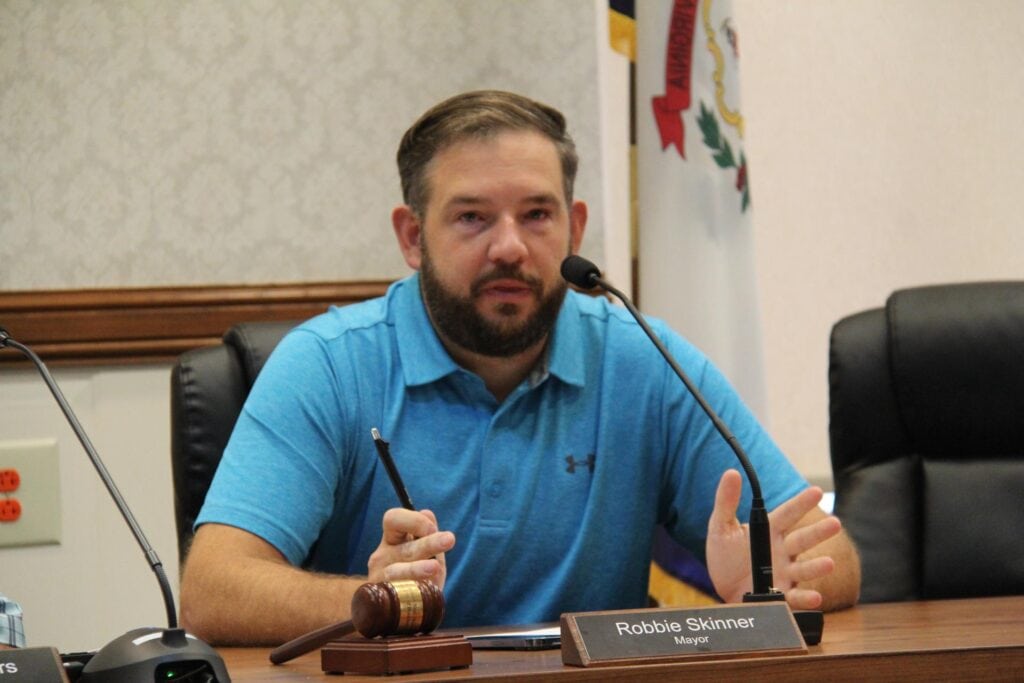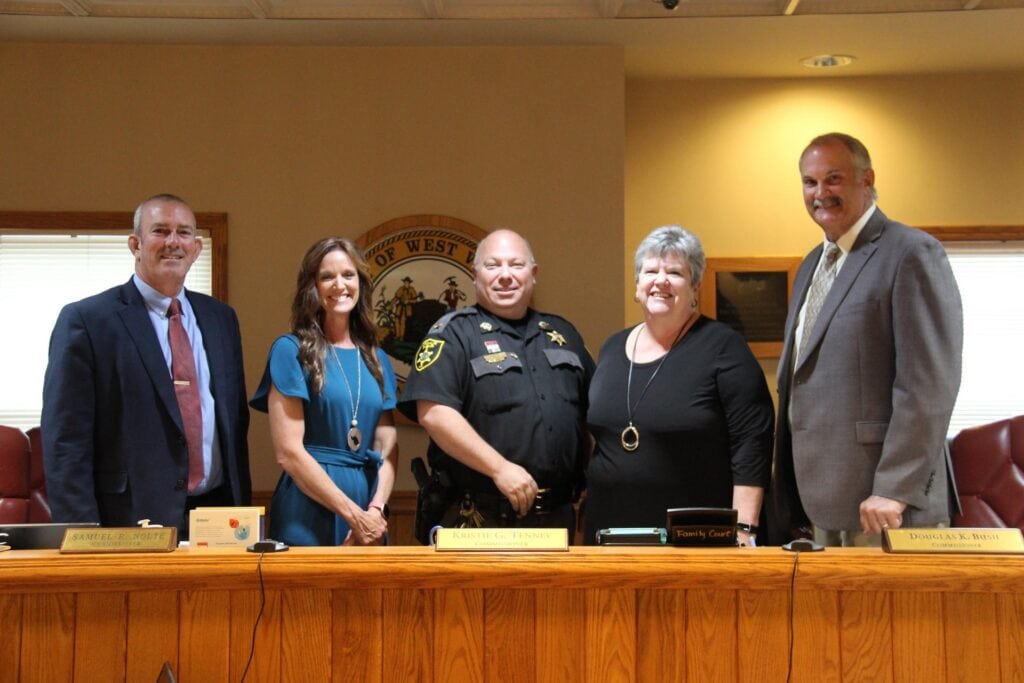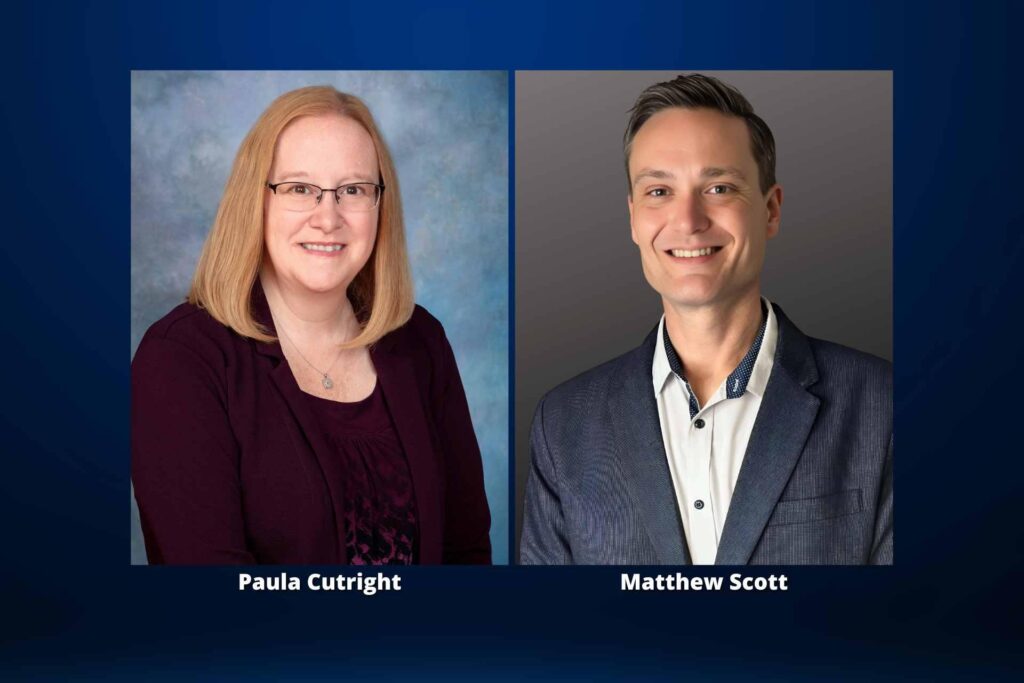BUCKHANNON – The City of Buckhannon has about $1 million more revenue dollars to work with as it delves into the 2021 fiscal year budgeting process, thanks to the 1 percent municipal sales tax that went into effect Jan. 1, 2020.
During the first in a series of working budget sessions Tuesday, finance and administrative director Amberle Jenkins said two main factors at play in the coming fiscal year budget – estimated at about $5 million if all supervisors’ requests are granted – are new municipal sales tax revenue and a handful of large one-time capital expenses.
The municipal budgeting process
By March 28 each year, municipalities across the Mountain State are required to submit their general fund budgets to the West Virginia State Auditor’s Office – and those budgets are required to be balanced, meaning revenues must match expenditures. The upcoming fiscal year runs from July 1, 2020 through June 30, 2021.
No decisions regarding the city’s general fund budget – which includes funding for city hall operations, the Buckhannon Police Department, the Buckhannon Fire Department, the Street Department and the Stockert Youth & Community Center – were made at Tuesday’s meeting.
However, during the meeting, supervisors presented their proposals to council members, who will consider and vote on them at later meeting. Jenkins said with supervisors’ requests factored into the budget, the 2020-2021 budget would amount to about $5 million, or exactly $5,067,838. (In comparison, council approved an approximate $4.5 million for the 2019-2020 fiscal year; however, that budget predates the municipal sales tax.)
At the outset of Tuesday’s nearly three-hour-long working budget session, Jenkins said about $950,000 of the $5 million budget would be derived from sales tax.

“In addition to sales tax, I wanted to point out that we have a lot of one-time capital expenses in this [proposed] budget, so we don’t want to be at this same place next year,” she said. “We have a lot of things we are going to need to level out.”
Police, fire and public safety
The largest portion of the 2020-2021 fiscal year budget is, as in years past, dedicated to public safety, with police chief Matt Gregory requesting about $1.3 million in funding, and Buckhannon Fire Chief J.B. Kimble asking for about $793,000. Specifically, Gregory asked for $27,600 to purchase a K-9 officer and equip the dog and the dog’s handler, Sgt. William Courtney; $25,000 for in-vehicle cameras, new body cameras and digital cloud storage; and $7,000 for Taser replacement, in addition to other line items.
Gregory said given the addiction epidemic, a K-9 officer would be especially useful in the enforcement aspect of tackling the problem.
“The time is right now more than ever to bring a K-9 program back to the City of Buckhannon,” Gregory said. “The drug issues in our community aren’t going away anytime soon, and I’ve long said that the problem demands a multi-faceted approach, including prevention, enforcement, treatment and recovery, and a K-9 is very important.”
The police chief said he believes a drug detection dog – German Shepherds, Dutch Malinois and Dutch Shepherd are the most common breeds – can address “street-level” issues in neighborhoods where drug activity is prevalent.
“When people complain about their neighbors [engaging in drug-related activity], by and large those issues would be positively directly affected by a K-9 unit,” Gregory said.
Referencing the Mountain Lakes Drug and Violent Crimes Unit, which covers Upshur and Braxton counties, the chief said drug task forces are ideal to investigate drug proliferation and sales over the long term, but K-9 units could tackle concrete, street-level problems.
“By using the two in tandem, it will only heighten the success of each,” he said.
Gregory also asked that the city purchase 11 in-cruiser cameras, which he said would benefit the department by collecting crucial evidence when officers are mobile.
“We’ve had a number of different incidents where in-car cameras would be extremely useful in an emergency [or pursuit] capacity,” he said. “You can see the route of the cruiser, the action of the drivers, and the camera comes on when the blue lights come on.”
The body cameras BPD officers are already equipped with offer a limited viewpoint in that, “you don’t see the officer; you just see the perspective of the officer,” Gregory said.
“It just captures the dashboard, and you can’t see outside the windows, so you’re missing a pretty large component of evidence during pursuit,” he added.
A company in Virginia that holds a national contract for in-vehicle police cameras, WatchGuard, priced 11 vehicle cameras; 11 new body cameras that sync up with the vehicle cameras; and cloud storage service for $125,000 – or five $25,000 interest-free payments over five years, Gregory said.
Excluding himself, Gregory also asked for “salary adjustments” of $2 per hour for his officers over their current salary rate to maintain competitive compensation rates, given that the BPD is one of only three departments in the state either that’s either earned or working toward receiving accreditation through CALEA, the Commission on Accreditation for Law Enforcement Agencies.
The police chief said a seasoned city officer who’s logged seven years of experience and attained the rank of corporal actually makes a penny less per hour –$18.72 – than an Upshur County sheriff’s deputy with less than a year of experience, who makes $18.73 an hour.
Mayor David McCauley said city council wants officers to “come here and stay here.”
“If we’re facing that type of threat [of a higher rate of compensation] just three blocks down the street, we could easily lose officers to neighboring agencies that offer more attractive compensation packages,” McCauley said.
Next up, fire chief J.B. Kimble requested $4,500 for a drone thermal imaging camera, $5,000 for LED lights in the fire station, $2,500 for computers, $6,500 for reporting software and $3,000 for turnout gear, among other expenses.
But the largest line item is funding for a new fire engine truck that’s estimated to cost $500,000 over a 10-year period. Jenkins built six months of payments at a rate of $5,300 per month into the 2021 FY budget. Kimble said several fire engine manufacturers have delivered presentations, and he’s waiting to see how much money the volunteer wing of the BFD can commit to the purchase.
“It takes about 12-15 months from when you order it until when you receive it, and we’re waiting to see how much the volunteers will commit,” Kimble told council. “We have about $40,000 in seed money so far.”
A drone thermal imaging camera could be utilized not only in cases of structure fires, but also in search-and-rescue missions, Kimble noted.
Councilman David Thomas asked Kimble about future funding for career firefighter positions if the city is awarded the SAFER grant (Staffing for Adequate Fire and Emergency Response) through the Federal Emergency Management Agency, which provides funding for three full-time firefighters over the course of three years.
After being turned down last year, the city plans to apply for the grant again this year.
“The question is, obviously, when the grant monies run out, how are we going to continue to sustain the expense for those three firefighters?” Thomas asked. “J.B., what is your position on the first due (area fire fee)?”
Kimble said implementing a first due area service fee – which would be applicable to property owners in the Buckhannon Fire Department’s ‘first due area’ outside city limits – will likely be necessary to sustain current service levels.
“It’s become clear the county doesn’t want to improve fire service for the community, so how can the city residents continue to fund fire protection for 90-95 percent of the county?” he said. “If we could get the county commission involved, we could have a wonderful fire service, but it takes money.”
“As I’ve said before, you can’t have a New York City Fire Department on a Mayberry budget, and in today’s world, volunteerism is down,” Kimble added.
(Read more about the recent discussions between the city and county here.)
Kimble said first due fees – first due refers to a fire department’s primary territory or area of protection – have worked well as funding mechanisms in surrounding cities, including Bridgeport and Elkins.
“Look, I’m a straightforward guy,” he said. “If we could get everybody on board, it would be a lot better, but we’re at a point now where we need to do something.”
Kimble argued that a first due fee could fund the construction of a BFD substation, which might be strategically located so that it would lower some residents’ ISO ratings, and in turn, their homeowner’s insurance rates.
“The other (county fire) departments need money,” he said, “but the fact is, we have to have a ladder truck, and we have to have three pumpers, so it costs more to do business at the Buckhannon Fire Department.”
SYCC and streets, sidewalks and lighting
Also during Tuesday’s budget session, SYCC director Debora Brockleman presented a roughly $354,000 budget, which included funding for a new full-time staff person ($21,840), as well as new software, desperately needed front doors and a new fire alarm system for a total of about $20,000.
Thomas told Brockleman to immediately replace the faulty fire alarm system, even if it meant dipping into the city’s rainy-day fund.
“I think that’s a liability, and we need to get that replaced right now,” he said.
Public works director Jerry Arnold and Streets Department superintendent Brad Hawkins told council they’d budgeted about $1.5 million to maintain and enhance streets, parks, sidewalks, lighting and more. Arnold said he’d allocated $56,500 for two additional full-time street department personnel, a concrete loader ($50,000), a side-by-side ($25,000) and two new truck leases ($19,200).
However, Hawkins and Arnold left project priorities up to council.
“The Gateway West project is the large grant-funded project the city is working on, and then you have a list of projects, but my recommendation is the Kanawha Street project,” Arnold said.
Completing the Kanawha Street project would entail installing sidewalks and lighting along north and south Kanawha Street, as well as paving the whole street, which Arnold said he believed should be undertaken in one shot.
“We are going to have to pave Kanawha Street one way or another,” he said, “and I think everyone will agree that it’s better to do it all at one time, even though it’s more money.”
Council recessed Tuesday and will continue budget discussions within the next two weeks. Municipal budgets must be approved and submitted to the state Auditor’s Office between March 7 and March 28.













